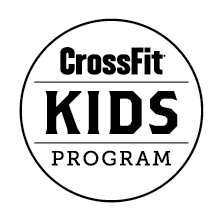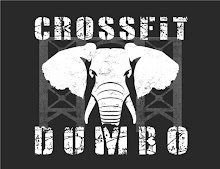By Alycia on February 28, 2011 in Articles
Courtesy of CrossFit Aspire

There are many elements of the sport of fitness (aka CrossFit) that have a tremendous amount of appeal to beginners and seasoned athletes alike. The variety of workouts, level of coaching, intensity of metcons, the community that forms, the PR’s, the stopwatch, the benchmark workouts…there area ton of reasons why people come back…and come back…and come back…and come back.
We think CrossFit is great; otherwise, we wouldn’t have opened the gym. But too much of a good thing, can be, well, too much. To go from couch potato to CrossFitter takes time, consistent effort, and smart training. Here are a few tips for all of the newbies (and some of you old-bies, too) to help keep your body in top shape as you begin to get into the best shape of your life:
1. More is not always better. Four Crossfit classes per week are better than two, but that doesn’t mean that six classes is better than four. If you roll out of bed to go to your sixth consecutive day’s workout and every muscle is sore, stay home. Shift your focus from quantity to quality. If you are going really heavy during the lifts, and you’re pushing yourself to your limit during each and every metcon, you might be best off with an extra rest day thrown in there every once in a while. Use the rest day to practice a sport, go for a light jog or a walk, or just hop on a foam roller while watching TV. Which brings me to my next point…
2. Rest and Recover. Recovering from a workout, believe it or not, isn’t about getting your breath back or waiting until you stop sweating. Recovery is what happens to your muscles, joints, tendons and brain when you leave the gym. You can work hard for 1 hour a day, but what about the other 23?
Meals. As much as you’d like to, you can’t erase bad eating habits with an extra hard workout. Think about what you are eating and what it’s doing to your body. Before you eat anything, ask yourself “Is this helping or hurting my body?” Just about all of your meals throughout the day should consist of Grassfed/free-range meat, fish or eggs, with a big serving of vegetables cooked in oil, butter (from Grassfed cows only) or topped with avocado.
Sleep. Get more of it! Turn out the lights 30 minutes earlier than you normally do now. Your body needs this time for cellular repair, and your brain needs some down time, too. Sleep in a pitch black room; invest in some heavyweight curtains that block out all of the light. It’ll dramatically affect your quality of sleep.
Lifestyle. Avoid unnecessary stress. The body is meant to handle a certain amount of acute stress, but long periods of chronic stress tend to throw the hormonal system all out of whack, resulting in fatigue, depression, belly fat, and other unsavory physical and mental symptoms. Exercise = good stress. A high stress job, unruly kids, late night boozing, and relationship unrest = bad stress. If you are having stress issues, try to identify (or create) one fraction of your life that is completely stress free. It might only the length of a TV show, a chapter of a book, a new hobby or a morning cup of coffee in silence, but be sure to find it and take advantage of it as much as possible.
Muscle and Tendon Repair. You are currently engaged in a training regimen not far off from that of a high level athlete. Your body is constantly adapting to new stresses, and is being pushed around, flexed and stretched in ways it isn’t used to. Initial signs of a hard workout, which include sore and tight muscles, should not be ignored. If you have chronic soreness or tightness in any part of your body, invest in a foam roller, a lacrosse ball, and spend some time at at the Mobility WOD Website to find new ways to become mobile and pain-free.
3. Scale It! The weights in our metcons are chosen on an individual basis, so that everyone can scale the weight to a level that will guarantee they finish within a few seconds to minutes of everyone else in the room. The quantity of reps and rounds, however, can also be adjusted. This presents the opportunity to scale UP or DOWN, depending on your ability. You know your body best, and as you work out here you will get to know, and push, its limits. Pushing your limits is great ( our advice is usually to go heavier, move faster, dig deeper), but working through pain, or grinding out super-slow reps, in a stubborn effort to get the work done, is not smart. If you see something on the board that seems utterly impossible, ask one of the trainers about scaling options. For the most part, we stick to short and intense metcons, but days with close to 100 reps of one movement do sometimes appear, and if your body isn’t equipped to handle the repetitive stress, it might be wise to scale back.
4. Exercise in cycles. Our life runs in cycles of intensity and down time. Intensity is necessary to survive (gotta pay the bills and keep yourself and your family healthy) and downtime is necessary to thrive. School breaks, vacation, weekends, social time, reading, etc are things that occur regularly to give your body and mind a break. Your training program should also provide you with periods of downtime. In addition to taking a few rest days per week, try setting aside 1 week every 4-6 weeks when you lift at sub-maximal weights, and leave a little gas in the tank during your metcon. Sure, you numbers won’t look as impressive on the whiteboard that day, but you are training for life, not for the whiteboard and a little break from the intensity is good for your body. Then, you’ll have no excuse for not crushing the workouts for the following 4-6 weeks. Some of you might benefit from this more than others, or find it suitable at different times in your training, so we’re leaving this one up to you to fit in on your own.
5. Consult a Professional. If you have joint, muscle or tendon pain that persists, book an appointment with a physical therapist, chiropractor or sports massage therapist ASAP. If your pain isn’t life-altering, avoid heading to the orthopedist right away (most are surgeons), and stick to a manual therapy for some natural relief first. A few sessions at any of these medical professionals, and some at-home rehab exercises, and you should be good as new. By routinely getting your body assessed and corrected, you will almost certainly avoid serious injuries that result in surgery or an inability (gasp!) to continue your workout program.
As your trainers, we want you to be healthy and strong. Our CrossFit gym is a place of high energy and intensity, filled with healthy and happy athletes. Let’s keep it that way. Happy Training!
Post thoughts to comments.




No comments:
Post a Comment